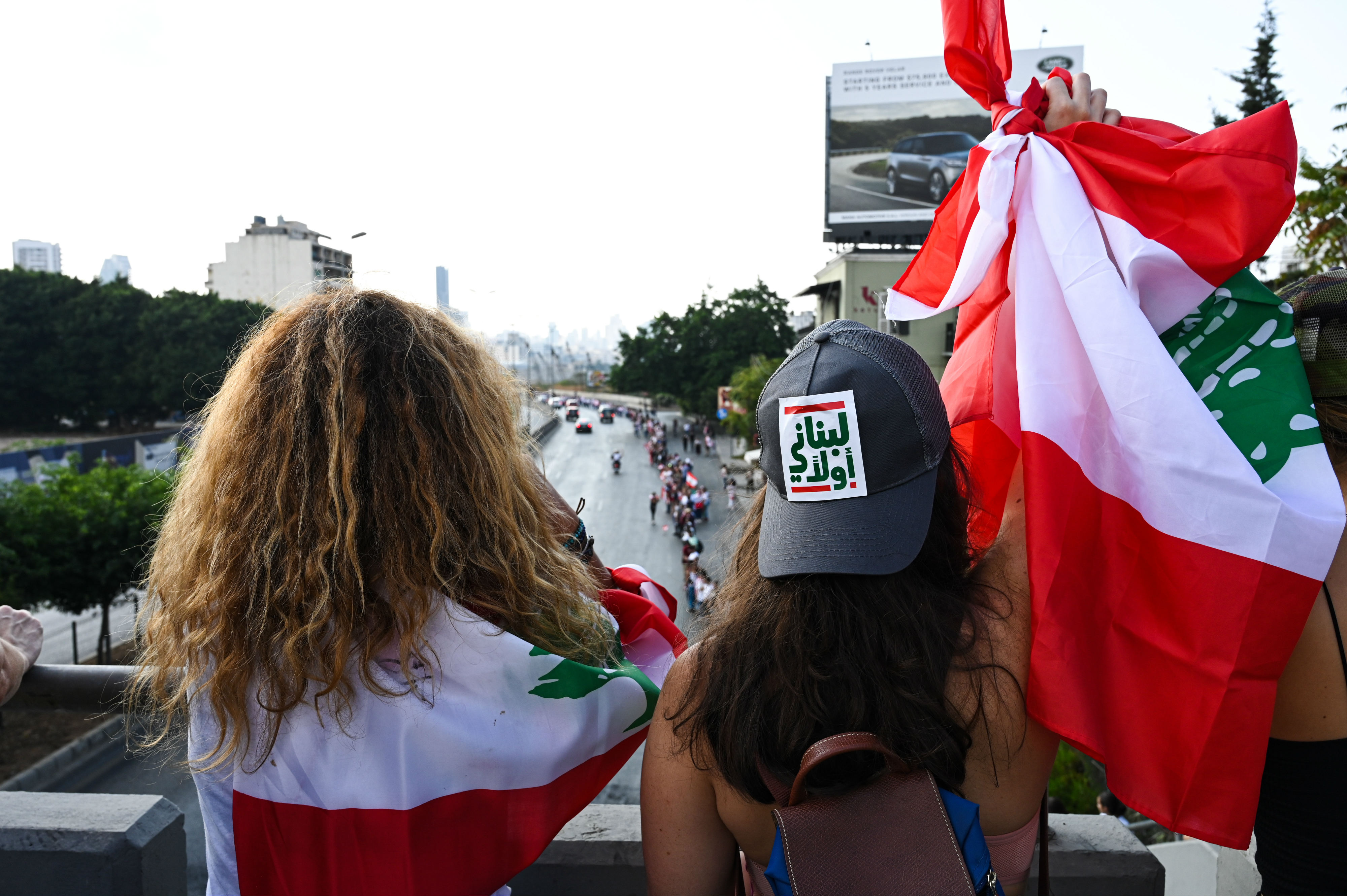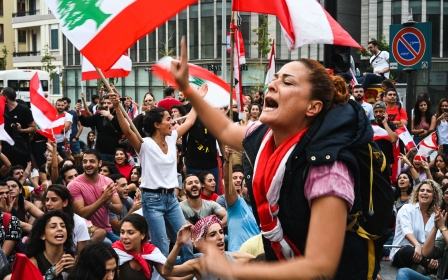'We are one': Lebanese link arms in human chain across the country

For days, Lebanese have severed roads and blocked routes across the country, but on Sunday tens of thousands of people linked the north to the south with a human chain.
The protests in Lebanon, now in their 11th day, have been notable for their insistence on unity between people of various sects and background. One of the most popular chants across different demonstrations has been “one, one, one, we are one people”.
Seeking to underlie this unity, the human chain was staged to showcase the solidarity between the country’s diverse regions.
Lebanon has a reputation for having a splintered society and political spectrum rooted in sect-based divides, but protesters have wholeheartedly rejected that image and framed the struggle as one of the population versus the political elite.
'What’s happening right now is exceptional, some of us, the older generation, never thought we were going to see a week like this'
- Sobhi Jaroudi, 67
Demonstrations have erupted nationwide, attracting hundreds of thousands of people, and been noted for their carnival atmosphere. Lebanon has seen explosions of solidarity and a wholesale rejection of the political class that has mismanaged the country since the 1975-90 civil war drew to a close.
New MEE newsletter: Jerusalem Dispatch
Sign up to get the latest insights and analysis on Israel-Palestine, alongside Turkey Unpacked and other MEE newsletters
The protests were sparked by an impending series of taxes designed to help tackle Lebanon’s economic crisis, which would have hit the pocket of millions of already-struggling Lebanese.
“I haven’t been able to go to downtown Beirut and I really felt I wanted to be a part of history,” Sobhi Jaroudi, 67, told Middle East Eye in the capital’s Ain al-Mreiseh neighbourhood.
Jaroudi and his wife were some of thousands that headed to the seafront to link arms with strangers.
“What’s happening right now is exceptional, some of us, the older generation, never thought we were going to see a week like this. Hopefully this will have a happy ending.”
Organisers said they were seeking 175,000 people to line Lebanon’s 175km coast. Though there were gaps, the numbers were nonetheless impressive.
Where crowds bunched, volunteers drove participants to more sparse areas.
Fadia Hani, one the organisers of the human chain, told MEE that they did not expect to be so overwhelmed with people who wanted to participate.
“We had asked for participants to register, but more and more people started spontaneously showing up in different regions,” she said, adding that while the numbers were challenging to accommodate, the response was a sign of success itself.
Hani said the human chain linked the northern city of Tripoli to the southern city of Sour (Tyre) and that the idea came much like the uprising first started - people coming together against injustice.
Groups of organisers were assigned different areas, and were in constant communication, Hani added.
Lining up along the coastal roads, people of all ages were gathering, breaking into songs, chants and conversation.
Passing cars honked in support of the human chain, as participants cheered back.
On Twitter, an image of a traditional Lebanese manouche flatbread with the message “Tripoli is hungry, deliver this manouche to her" went viral.
The treat was being passed from the southern city of Sidon to the north’s Tripoli, which has borne the brunt of much of Lebanon’s upheaval and economic decay in recent years.
Tiny Lebanon, which has a population of some four million people and hosts over a million refugees, has been blighted by regional upheavals, corruption and a broken political system.
It has one of the highest levels of debt in the world, and politicians have struggled to come to agreements and address its myriad problems.
“We are one people. ‘Our’ leaders have been fooling us for decades that we are not one nation, but a group of nations,” Jaroudi said.
“The past 10 days have shown that we are truly one nation, we are Lebanese, and that’s why you only see the Lebanese flag.”
Middle East Eye delivers independent and unrivalled coverage and analysis of the Middle East, North Africa and beyond. To learn more about republishing this content and the associated fees, please fill out this form. More about MEE can be found here.






